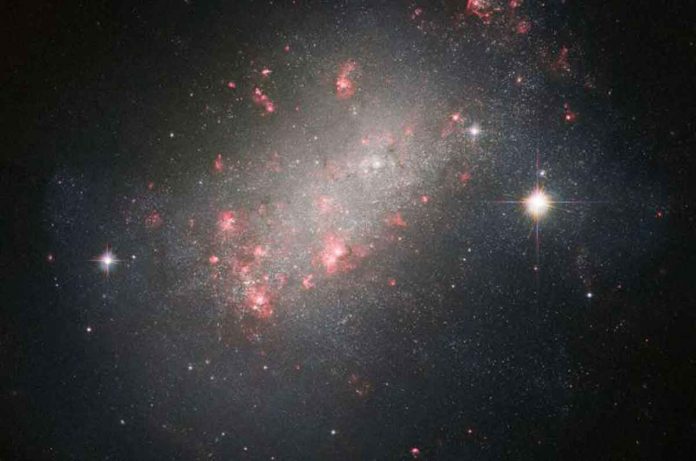The galaxy in this image from NASA’s Hubble Space Telescope is unlike many of the galaxies seen by Hubble. Its thousands of bright stars are reminiscent of a spiral galaxy, but it lacks the typical “winding” structure. The gleaming red blossoms, twisted by dust clouds, stand out as well—these are the locations of intense star formation. The galaxy emits a diffuse glow, similar to that of an elliptical galaxy and its core of older, redder stars. Astronomers call this galactic wonder NGC 1156.
NGC 1156 is about 25 million light-years away in the constellation Aries. It has a number of features that astronomers are interested in. It’s a dwarf irregular galaxy that’s also isolated, which means no other galaxies are close enough to influence its odd shape and ongoing star formation. The extreme energy of newly formed young stars colours the galaxy against the red glow of ionised hydrogen gas, while the galaxy’s core is densely packed with older generations of stars.
Hubble has previously captured NGC 1156. This new image was created using data from a galactic gap-filling programme called “Every Known Nearby Galaxy.” Astronomers noticed that Hubble had only observed three-quarters of the galaxies within roughly 30 million light-years of Earth in sufficient detail to study the composition of the stars within them. They proposed that Hubble take snapshots of the remaining quarter, including NGC 1156, in between larger projects. Gap-filling programmes like this one ensure that Hubble’s valuable observing time is maximised.

